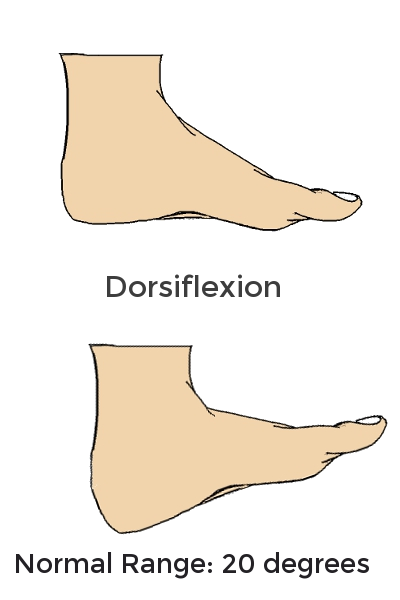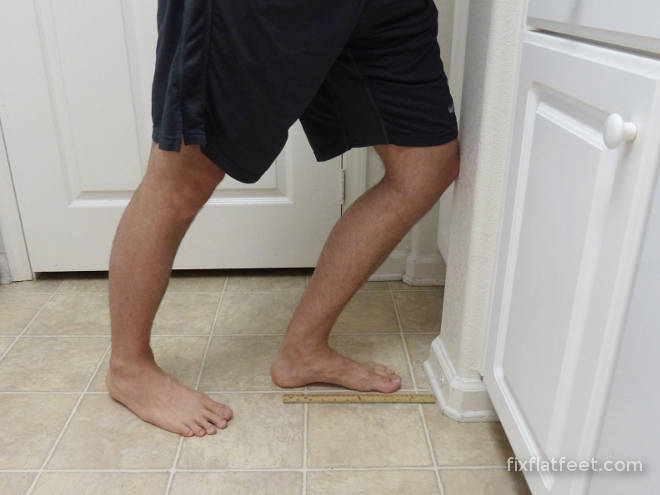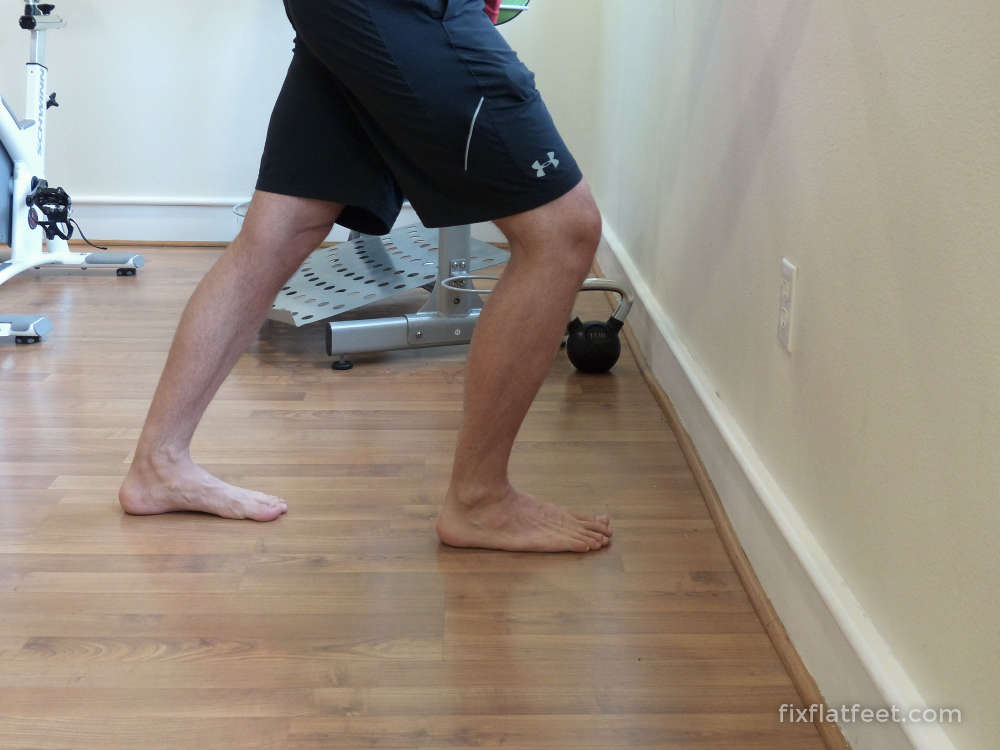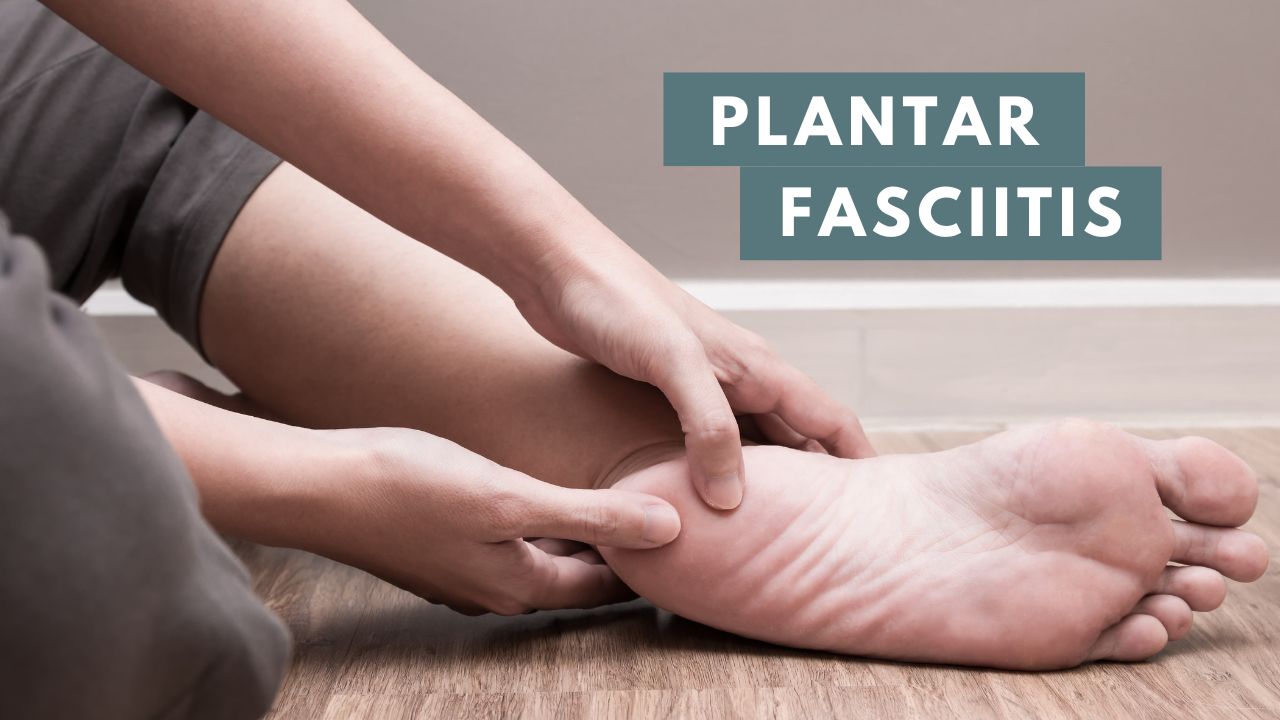Ankle dorsiflexion is the motion of the ankle joint that brings the top of the foot closer to the shin. A restriction in this motion may contribute to foot pronation and flat feet. Dorsiflexion range of motion is often limited by the inflexibility of the lower leg muscles.
Normal Dorsiflexion Range of Motion
Ankle dorsiflexion is typically measured in degrees. When the lower leg and the foot form a right ankle (as pictured below) this is considered 0 (zero) degrees.

Normal range of motion for ankle dorsiflexion is about 20 degrees. At least 5 degrees of dorsiflexion is needed for normal walking.
How Limited Dorsiflexion Relates to Flat Feet
Activities that require the knee to travel forward over the foot use this ankle dorsiflexion movement. This can be seen in everyday activities like walking, running, stair climbing, and standing up from a chair.
One way the body compensates for limited ankle dorsiflexion is by increasing motion in other areas.
Three compensatory motions that can occur at the foot are:
- dorsiflexion in the middle of the foot,
- turning out of the heel (heel eversion) and
- turning out of the front of the foot (forefoot abduction)
These same motions are associated with increased pronation and flexible flat feet.
In other words, the arch can collapse and the ankle can roll inward to make up for the movement that would normally come from the ankle bending.
This was clear in my case because whenever I went into a squat my already flat feet would collapse even farther. This relationship between ankle flexibility and the foot arch is why I consider calf stretching one of the best exercises to help flat feet.
Causes of Dorsiflexion Limitation
There are several proposed causes of limited ankle dorsiflexion. I suspect one factor is the frequent wearing of shoes with elevated heels.
Most shoes have a heel that is slighter higher than the front of the shoe. A raised heel puts the ankle in a plantarflexed position which is the opposite of dorsiflexion. This has been shown to result in a loss of ankle flexibility. Consequently, this is a reason why I prefer minimalist shoes.
A lack of activities requiring large degrees of ankle flexibility may also be a contributing factor. Activities like hill climbing and deep squatting help maintain ankle flexibility. Yet with our modern lifestyles, these are not activities that many people do on a regular basis.
Testing Ankle Flexibility
To measure ankle dorisflexion I like to use the Lunge Test with a ruler or tape measure. Doing this allowed me to easily track my progress.

This Lunge Test is performed by standing with the heel in contact with the ground, the knee in line with the second toe, and the big toe about 10 cm away from the wall.
The knee is brought toward the wall by lunging forward. If the knee doesn’t reach the wall, the foot is moved closer in small increments until the knee can touch.
My goal was to be able to touch the wall with the big toe placed 10 cm away from the wall. I used to have really bad ankle flexibility before I started working on this.
It took several months of regular calf stretching to reach that goal. The improved flexibility made it a lot easier to form and hold arches in my feet.
References
- DiGiovanni CW, Langer P. The role of isolated gastrocnemius and combined Achilles contractures in the flatfoot. Foot and ankle clinics. 2007 Jun 30;12(2):363-79.
- Csapo R, Maganaris CN, Seynnes OR, Narici MV. On muscle, tendon and high heels. Journal of Experimental Biology. 2010 Aug 1;213(15):2582-8.



